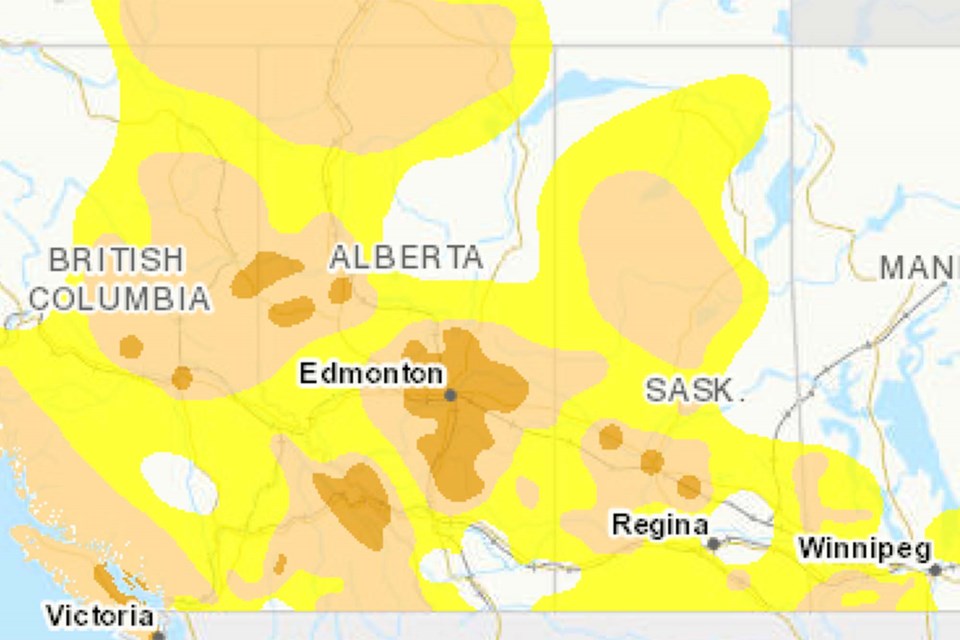Producers in Alberta have reason to be optimistic with regards to drought conditions this year despite some concerns in some areas of the province.
Trevor Hadwin an agroclimate specialist from Agriculture and Agri-Food Canada (AAFC), said drought conditions are “looking fairly good” in Alberta with moderate to severe concerns for central and northern parts of the province.
“There are a few pockets of moderate (drought conditions) that we’re a little bit concerned about at this time. But again, we're still really early in the spring and one good or good rainfall events can really change things in a big hurry,” said Hadwin.
In the central part of the province, in the area north of Calgary towards Edmonton, Hadwin said there is a tendency for drier conditions going into winter.
“They haven't received as much snow as they normally would. There's a little bit of concern in that region. But certainly not as much as last year going into the spring,” he said.
The central region of the province has “been suffering deficits for a while now,” Hadwin said.
The region experienced a drought in 2021, and although the area has recovered it hasn’t recovered fully.
“There are a little bit larger deficits for moisture in that region. And again, that area did not get as much snow fall this year. A lot of those areas up in the Edmonton area, they're between 60 and 80 per cent of normal for the winter snowfall,” he said.
Less snowfall, Hadwin continued, means less runoff and less water available to soak into the soil for spring.
Hadwin said the Peace River region is also seeing moderate drought conditions similar to the conditions in central Alberta.
“A little bit less rainfall last fall. It went into the winter a little bit drier than normal. And now we're seeing less snowfall than normal up in the area as well. We'll wait to see what happens with our spring melt,” he said.
Hadwin said there has been some benefits as well as drawbacks to the abnormally cool spring Alberta has seen this year.
The snowpack has not melted off early and for the most part, the province has retained the moisture it received during the winter.
“The challenge is if we get a really quick melt all of a sudden, we end up losing a lot of that moisture into the streams and for runoff where we really want that water to soak in.
“It'll be really nice at this point of the year to start getting 10 degrees during the day, a little bit cooler nights down to like minus three, four, to slow down the melt,” he said.
However, Hadwin said that is not happening.
“We're getting values that are slightly above freezing, and then right back down to well below freezing. We're not melting as much as we should be at this time.
“The worry is that we'll have a really rapid melt, and we'll lose a lot of that moisture to that rapid melt,” he said.
While there our concerns in central and northern parts of Alberta, the southern parts of the province are looking well with very little drought and adequate moisture going into the spring in most areas.
Southern Alberta has seen more moisture this year than what is typical.
“That area actually went into the season a little bit better than the normal. The soil moisture was there in the fall. They received quite a bit of moisture this winter — a little bit above normal snowfall. That area, despite not having a whole lot of snow left right now, because a lot of it has melted, the soils are fairly good at this point in the year,” he said.
Overall, Hadwin said spring is looking fairly good for Alberta and he is hopeful the drought cycle due to La Nina conditions is ending.
“We've got some small areas that we're concerned about, and certainly the bigger concerns are in the central region of the province but they're certainly much better than we've seen in the last couple years,” he said.
Data for the Canadian Drought Outlook was update on April 14.




